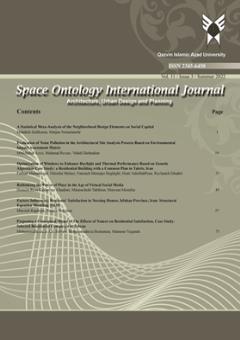-
-
List of Articles
-
Open Access Article
1 - Assessing the effects of spatial land use distribution in pathway network on travel pattern of citizens (Case Study: Seventh district of Qom City)
Mahsa Mostaghim Manouchehr Tabibian Shirin Toghyani Amir Gandomkar -
Open Access Article
2 - Explaining the Pattern of Livability with Emphasis on Raise of Physical-Spatial Structure (Case Study: Rasht City’s Central District)
Mirnavid Mirhaghjou komele Shadi Pakzad Vahid Bigdeli Rad -
Open Access Article
3 - The emotional experience dimensions of the residents of apartment units during the coronavirus pandemic (case study: Tehran)
yeganeh khalili Ghasem Motalebi -
Open Access Article
4 - Explaining the Pattern of Identifying Urban Brands in the Direction of Developing Culture-based Tourism )Case study: Tabriz City)
Asghar Molaei Kasra Ketabollahi -
Open Access Article
5 - Beyond Green : A Comprehensive Approach to Urban green space Quality and tastes of users in Tehran
Farzaneh Azadi Kianoush Suzanchi Mahdi Haghighatbin Mahdi Khansefid -
Open Access Article
6 - Investigating the Effects of Physical Factors on Promoting the Objective Dimension of Quality of Life for the Physical Environments of the Elderly (Case Study:Elderly Care Centers of Isfahan , Iran)
Atena sadat Hashemi Fesharaki Seyedeh Marzieh Tabaeian Samar Haghigi Boroojeni Maryam pourshams
-
The rights to this website are owned by the Raimag Press Management System.
Copyright © 2021-2025







